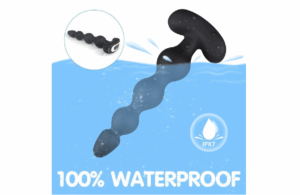🌐Over $68 Ships Free Worldwide
The Chemistry of Desire: Unraveling the Hormonal Tapestry of Your Sex Life
We often think of sexual desire as a spontaneous spark—a mysterious force that either appears or doesn’t. While emotion and context are critical, beneath the surface lies a complex and powerful chemical orchestra conducted by our hormones. Understanding this biochemistry isn’t about reducing romance to a science lab; it’s about empowering ourselves with knowledge to navigate the natural ebbs and flows of our libido with compassion and insight.
Testosterone, often mislabeled as the “male hormone,” is a key driver of libido in all genders. In people with testes, it fuels the frequency of sexual thoughts and the motivation to seek out sexual activity. In people with ovaries, testosterone, produced in the ovaries and adrenal glands, plays an equally vital role in stoking the fires of desire. When levels are optimal, interest in sex is often higher. However, stress, certain medications (like some antidepressants), and perimenopause can cause levels to fluctuate, leading to a noticeable dip in libido. It’s crucial to remember that a low-sex-drive phase is rarely a personal failing or a relationship problem; often, it’s a hormonal one.
On the other side of the spectrum are estrogen and progesterone, the primary hormones of the menstrual cycle. Their dance throughout the month creates predictable patterns in desire for many. In the days leading up to and during ovulation, when estrogen peaks, libido often surges. This is nature’s clever design to encourage procreation. After ovulation, as progesterone rises to prepare the body for a potential pregnancy, many individuals experience a calmer, sometimes lower, desire. Tracking your cycle alongside your mood and libido can reveal your personal pattern, allowing you to understand and anticipate these changes rather than being frustrated by them.
Then there’s oxytocin, the “cuddle hormone” or “bonding molecule.” This hormone is released during skin-to-skin contact, hugging, orgasm, and even during heartfelt conversation. It fosters feelings of trust, attachment, and safety. For long-term couples, oxytocin is the glue that maintains intimacy, shifting the motivation for sex from purely physical desire to a deeper need for connection and bonding. This is why scheduled intimacy or “just getting started” can often lead to enjoyable sex, even if you weren’t initially in the mood; the physical contact triggers oxytocin release, which can then kickstart desire.
Finally, we cannot ignore the great libido killer: cortisol. This stress hormone, essential for survival, directly suppresses the reproductive system. In a state of chronic stress—whether from work, financial worries, or family pressures—your body is in “survival mode.” It diverts energy away from non-essential functions like digestion, repair, and, yes, reproduction and desire. You can’t think your way out of a cortisol spike. The solution lies in active stress-management techniques: mindfulness, exercise, adequate sleep, and setting boundaries.
Understanding this hormonal tapestry allows for a kinder, more proactive approach to your sex life. Instead of asking, “Why don’t I want sex anymore?” you can begin to ask more productive questions: “How is my stress management?” “Where am I in my cycle?” “Am I getting enough touch that isn’t goal-oriented?” This knowledge empowers you to work with your body’s chemistry, not against it, paving the way for a more harmonious and satisfying intimate life.



